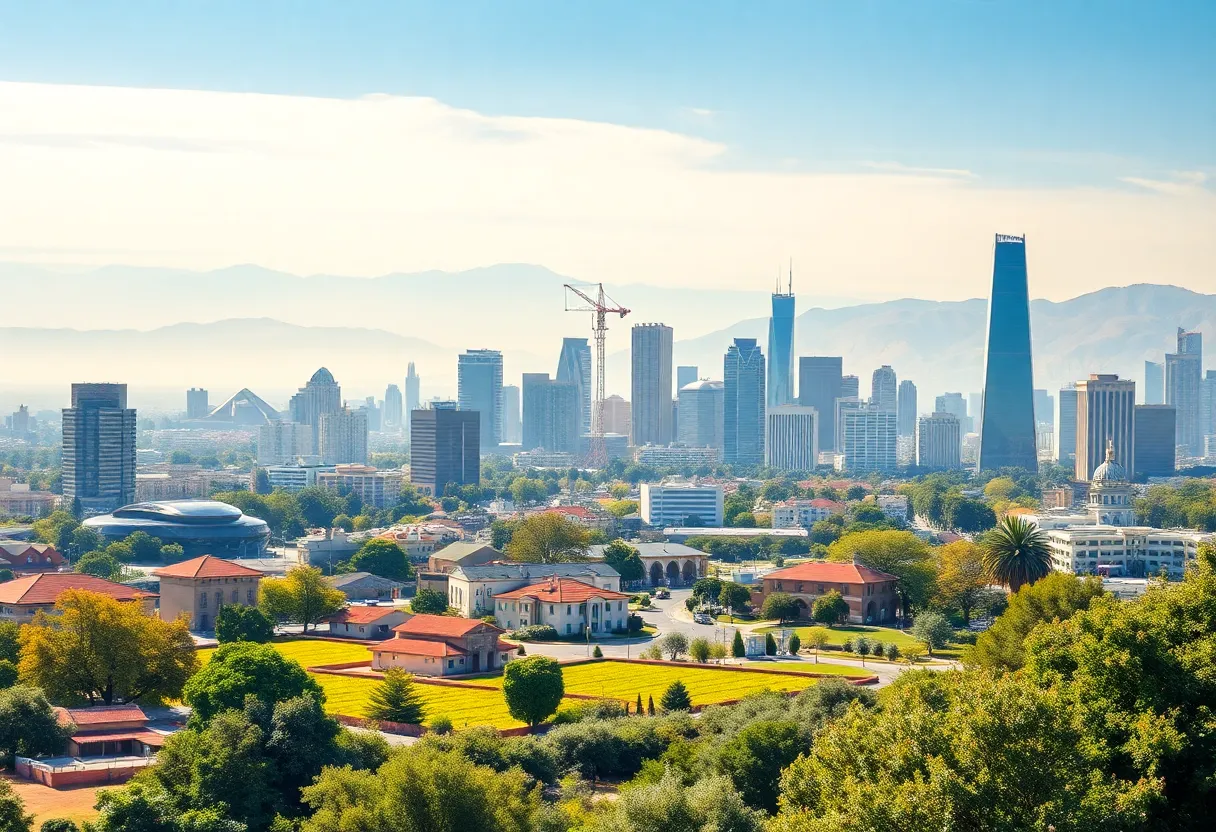News Summary
California has officially become the fourth-largest economy in the world, surpassing Japan with a GDP of $4.1 trillion. Governor Gavin Newsom announced this impressive milestone, highlighting the state’s economic growth of 6% in 2024, driven by diverse sectors such as technology, agriculture, and tourism. However, challenges such as trade tensions, housing issues, and economic inequalities loom on the horizon, raising questions about the sustainability of this economic status.
California Surges Ahead: Now the Fourth-Largest Economy in the World
In an impressive leap, California has officially become the fourth-largest economy in the world, surpassing Japan with a nominal gross domestic product (GDP) soaring to $4.1 trillion. This data, shared by Governor Gavin Newsom, showcases how the Golden State now stands proudly among economic giants, trailing only behind the United States, China, and Germany.
California vs Japan
According to the latest figures, Japan’s GDP is recorded at approximately $4.02 trillion, making California’s achievement even more remarkable. The International Monetary Fund (IMF) and the U.S. Bureau of Economic Analysis have officially confirmed these numbers, leading to much celebration among Californians.
In 2024, California’s economy grew by a staggering 6%, outpacing several top economies, where the average growth rate for the U.S. was 5.3%, 2.6% for China, and 2.9% for Germany. This significant growth can be attributed to California’s diverse economy, which encompassed key sectors such as technology, agriculture, tourism, and entertainment.
Strong Growth in a Challenging Environment
Despite facing challenges from a precarious trade war, especially with China, California has demonstrated remarkable resilience. The population of the state has expanded by nearly a quarter of a million in 2024, providing a solid foundation for economic growth. This influx of residents means increased economic activity, contributing to the impressive growth in GDP.
Governor Newsom highlights the increasing population, booming tourism, robust venture capital investments, and innovative business initiatives as the backbone of the state’s economic success. The landscape is perfect for high-tech industries, as California’s labor market has grown by approximately 30% since 1998, demonstrating the state’s sustained job creation.
Challenges Looming on the Horizon
However, not all is sunny in the Golden State. Recent concerns have centered around the potential negative impacts of tariffs. With a lawsuit filed against President Trump, Newsom is challenging the ability of the federal government to impose tariffs without the backing of Congress. The state’s reliance on trade—amounting to $675 billion in two-way trade last year—raises alarms, especially with imports stemming primarily from Mexico, Canada, and China, all critical partners.
Economic analysts have expressed worries that continued tariffs could jeopardize California’s newfound economic status and possibly lead to a dip in state revenues. A chilling reminder of the economic inequalities in California persists, notably highlighted by a stark contrast in per capita income. While the Bay Area boasts an impressive $131,000, other regions like the Inland Empire and the Central Valley struggle with significantly lower incomes.
Gripping Economic Challenges
Moreover, California continues to wrestle with several pressing issues such as housing unaffordability, homelessness, and aging infrastructure. These issues pose risks to future growth and may affect the long-term sustainability of its thriving economy. As recent data indicated, California’s private sector has faced a setback, losing 154,000 jobs, whereas the public sector has gained 361,000 jobs, revealing a contrasting narrative within the labor market.
As we head into the future, the uncertainty surrounding U.S. and global markets amid ongoing trade tensions serves as a reminder that, while California celebrates its economic achievements, there are still hurdles to overcome. With a mix of optimism and caution, Californians will need to keep an eye on these shifting dynamics. The important question remains—can California maintain its fourth-place ranking in the world or will the challenges ahead pull it backward? Only time will tell.
Deeper Dive: News & Info About This Topic
- CNN: California Surges Ahead
- Wikipedia: California
- BBC: California Economy Article
- Google Search: California economy
- Fox Business: California Overtakes Japan
- Encyclopedia Britannica: Japan
- Mercury News: California Economy News
- Google Scholar: California GDP
- San Francisco Chronicle: California Economy Update
- Google News: Tariffs Impact on California Economy

Author: STAFF HERE HOLLYWOOD
The Hollywood Staff Writer represents the experienced team at HEREHollywood.com, your go-to source for actionable local news and information in Hollywood, Los Angeles County, and beyond. Specializing in "news you can use," we cover essential topics like product reviews for personal and business needs, local business directories, politics, real estate trends, neighborhood insights, and state news affecting the area—with deep expertise drawn from years of dedicated reporting and strong community input, including local press releases and business updates. We deliver top reporting on high-value events such as the Hollywood Bowl summer concerts, the Hollywood Christmas Parade, film premieres at TCL Chinese Theatre, and festivals at the Magic Castle. Our coverage extends to key organizations like the Hollywood Chamber of Commerce and Visit Hollywood, plus leading businesses in entertainment, dining, and tourism that define the local economy. As part of the broader HERE network, including HERELosAngeles.com, HEREBeverlyHills.com, HEREAnaheim.com, and HEREHuntingtonBeach.com, we provide comprehensive, credible insights into Southern California's dynamic landscape.





